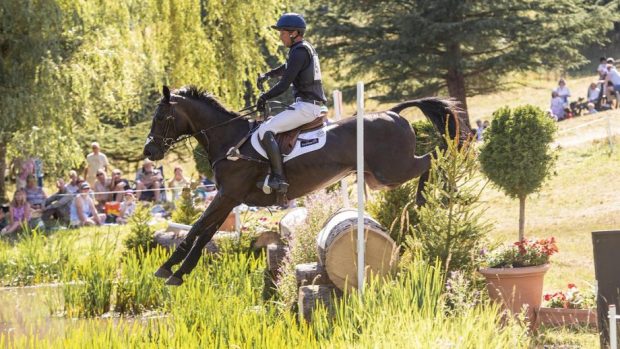Thunderstorms aren’t uncommon at this time of year, and they highlight the ongoing dilemma about whether it is safer to keep your horse in or leave him out during thunder and lightning. We take a look at the pros and cons of each approach
While cases of horses being hit by lightning are, thankfully, relatively rare, when storms are forecast it is understandably a cause for concern for owners. As well as direct strikes, there is the worry that horses will hurt themselves while galloping around, so is stabling your horse a better option?
Here’s some advice on caring for horses in thunderstorms ahead of the weather that is forecast for many parts of Britain this week…
Stabling during a thunderstorm
Horses are very sensitive to electricity, particularly lightning, and the British Horse Society’s official advice is to house horses in thunderstorms.
“If you have access to well-grounded stabling, we would advise keeping an eye on the weather forecast and stabling your horse if there is a threat of a lightning storm,” says BHS Head of Welfare Gemma Stanford.
While some horses appear unconcerned by wild, stormy weather, others become very unsettled. For this reason alone, some owners prefer to stable their horses rather than have them galloping about and putting themselves at risk of injury.
“We always bring them in now,” says eventer turned showing producer and judge Michael Cooper. “We had one bolt badly [during a thunderstorm] — it smashed through and then got stuck in the field gate and was a real mess.”
Horses’ natural herding instinct during a thunderstorm can also increase the risk of injury or death from a lightning strike. Often, they will group together for protection from the elements and, if the storm includes heavy rainfall, will shelter beneath a large tree — often attractive targets for a lightning strike.
If this also happens to be near a water trough or wire fence, the combination of a tall tree, good electrical conductors and rain-sodden ground can be fatal for horses. The risk is heightened for horses wearing steel shoes.
The out option of horses in thunderstorms
Some owners, however, feel leaving their horses out is the better option. Breeder Julia Hodkin, of the Future Sport Horse stud near Beverley, has lots of youngstock at grass, as well as competition horses grazing during the day.
“We generally don’t bring them in as I’ve actually never really seen any of our horses that bothered about thunder; they almost seem to know it’s part of nature and isn’t going to physically hurt them. If the thunder was being accompanied by serious lightning, howling winds and driving rain, however, we would bring them in because of the detrimental effects of those elements on them,” says Julia.
Showjumper Derek Morton is another with youngstock at grass.
“We always bring young foals in out of heavy rain whether there are thunderstorms involved or not, but once they are over six weeks old I wouldn’t bring any stock in out of thunderstorms. I’m a true believer in treating my youngstock as if they were in the wild and they certainly wouldn’t get a stable in the wild to get away from the elements,” says Derek, who houses all his competition horses at night.
For those who choose to house their horses during thunderstorms, the advice is to ensure the buildings are well grounded and have lightning rods. The grounding system in a building can provide an easy route for electricity to run to earth in the event of a lightning strike or power surge.
While nowhere outside is safe from lightning, as emphasised by lightning expert Grant Kirkby, if you are put in the position where your horse will be turned out in a storm, the advice is to make paddocks as safe as possible.
This includes:
- Site shelters on lower ground rather than in exposed, isolated areas (which can make them a target for a lightning strike).
- Avoid using fields with streams running through them and be aware that lightning can travel along wire fencing, water courses and even ‘jump’ from a tree to your horse. It may be worth fencing off large single trees in exposed locations to stop horses sheltering beneath them. Of course, this decision has to be balanced against the benefits of using these trees to offering shelter for horses from flies and the heat.
Finally, the safety of those handling horses in thunderstorms also has to be considered. Planning ahead and bringing horses in before the forecasted bad weather arrives is ideal, but in situations where this hasn’t been possible, it may be too dangerous to safely bring horses in during thunder and lightning.
- To stay up to date with all the breaking news from major shows throughout 2025, subscribe to the Horse & Hound website
You may also be interested in:

Turnout boots: what are the pros and cons?

23 ways to beat flies this summer
We might be excited about the prospect of some sun — but with it comes the pesky flies. So we

Subscribe to Horse & Hound magazine today – and enjoy unlimited website access all year round




